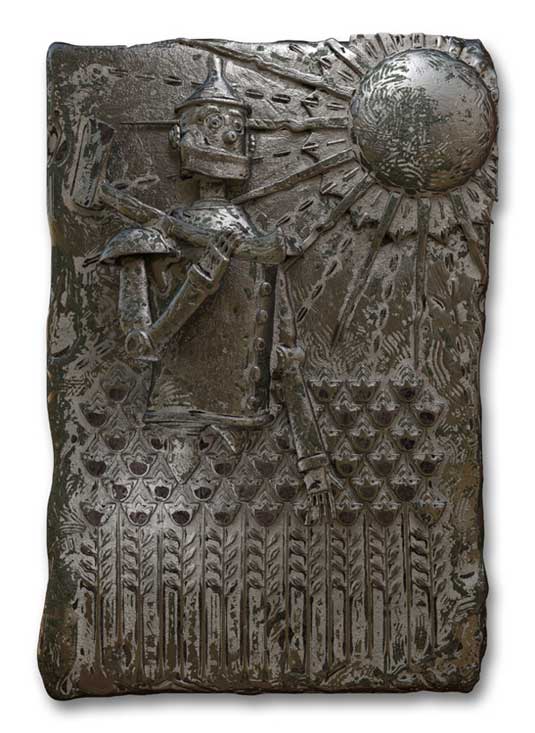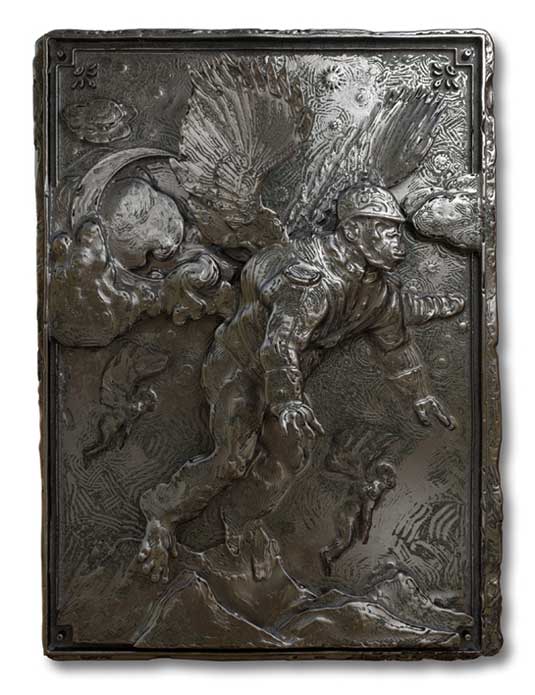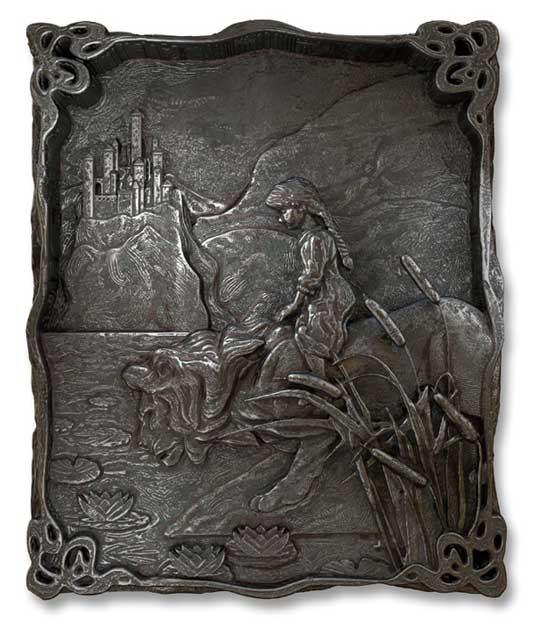The spectacular 'faux reliefs' of Grant Parsley
They're not made of metal. They're made of pixels! Grant Parsley explains how he used Zbrush and Blender to create these awesome Wizard of Oz-themed artifacts.

We can't believe these Wizard of Oz-themed metallic reliefs aren't solid objects but entirely made of pixels!
Dallas-based illustrator/graphic designer Grant Parsley used a combination of 3D tools Zbrush and Blender to create the collection. A recent convert to the use of 3D software for illustration, he didn't want to just follow in other illustrators' footsteps but create something new.
New approach
"Most artists create either lo-poly work for gaming or high realism work for visual effects," he explains. "And for good reason - this is where most of the jobs are focused for 3D artists. But while this type of work is incredible, I wanted to try something different."

As he searched for inspiration, he focused on at the fine art that's closest to 3D - sculpture. "While reviewing museum reliefs, it hit me that a relief style might lend itself to illustrating classic children’s literature. I’d recently read The Wizard of Oz with my young daughter and could envision illustrating these beloved characters in relief form. And I’m thrilled with the results."
How they're made
To create his "faux reliefs", Parsley begins by sketching out several compositions in loose pencil. "Once I’m pleased with a composition, I sculpt my organic hi-poly elements entirely in Zbrush. Then I model the simple hard edge elements in Blender. "

He merges all elements together in Zbrush and refine the merged mesh. "Next, I create additional variants of the model - working quickly to create slight differences in the surface.
"Finally, I import all of the work into Blender, assign a unique texture to each mesh, light, and render. The combined meshes enhance the texture differences in the relief surface and produce a very natural worn appearance."
Daily design news, reviews, how-tos and more, as picked by the editors.
Like this? Read these!
- Amazing examples of experimental design
- Discover what's next for Augmented Reality
- Beautiful examples of spirit bottle labels
Have you seen an inspiring and original use of 3D software? Let us know about it in the comments!

The Creative Bloq team is made up of a group of art and design enthusiasts, and has changed and evolved since Creative Bloq began back in 2012. The current website team consists of eight full-time members of staff: Editor Georgia Coggan, Deputy Editor Rosie Hilder, Ecommerce Editor Beren Neale, Senior News Editor Daniel Piper, Editor, Digital Art and 3D Ian Dean, Tech Reviews Editor Erlingur Einarsson, Ecommerce Writer Beth Nicholls and Staff Writer Natalie Fear, as well as a roster of freelancers from around the world. The ImagineFX magazine team also pitch in, ensuring that content from leading digital art publication ImagineFX is represented on Creative Bloq.
